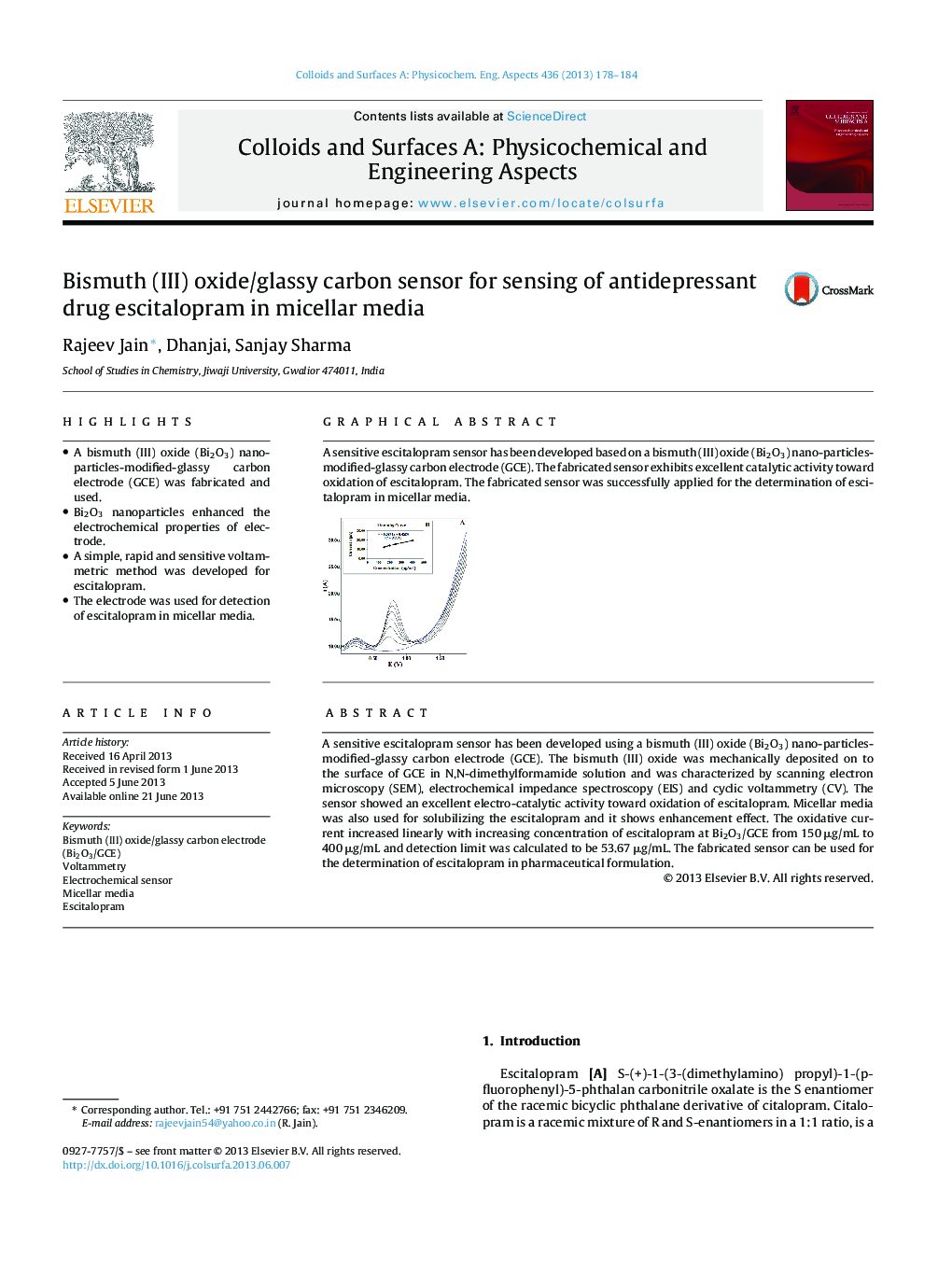| Article ID | Journal | Published Year | Pages | File Type |
|---|---|---|---|---|
| 593340 | Colloids and Surfaces A: Physicochemical and Engineering Aspects | 2013 | 7 Pages |
•A bismuth (III) oxide (Bi2O3) nano-particles-modified-glassy carbon electrode (GCE) was fabricated and used.•Bi2O3 nanoparticles enhanced the electrochemical properties of electrode.•A simple, rapid and sensitive voltammetric method was developed for escitalopram.•The electrode was used for detection of escitalopram in micellar media.
A sensitive escitalopram sensor has been developed using a bismuth (III) oxide (Bi2O3) nano-particles-modified-glassy carbon electrode (GCE). The bismuth (III) oxide was mechanically deposited on to the surface of GCE in N,N-dimethylformamide solution and was characterized by scanning electron microscopy (SEM), electrochemical impedance spectroscopy (EIS) and cyclic voltammetry (CV). The sensor showed an excellent electro-catalytic activity toward oxidation of escitalopram. Micellar media was also used for solubilizing the escitalopram and it shows enhancement effect. The oxidative current increased linearly with increasing concentration of escitalopram at Bi2O3/GCE from 150 μg/mL to 400 μg/mL and detection limit was calculated to be 53.67 μg/mL. The fabricated sensor can be used for the determination of escitalopram in pharmaceutical formulation.
Graphical abstractA sensitive escitalopram sensor has been developed based on a bismuth (III) oxide (Bi2O3) nano-particles-modified-glassy carbon electrode (GCE). The fabricated sensor exhibits excellent catalytic activity toward oxidation of escitalopram. The fabricated sensor was successfully applied for the determination of escitalopram in micellar media.Figure optionsDownload full-size imageDownload as PowerPoint slide
